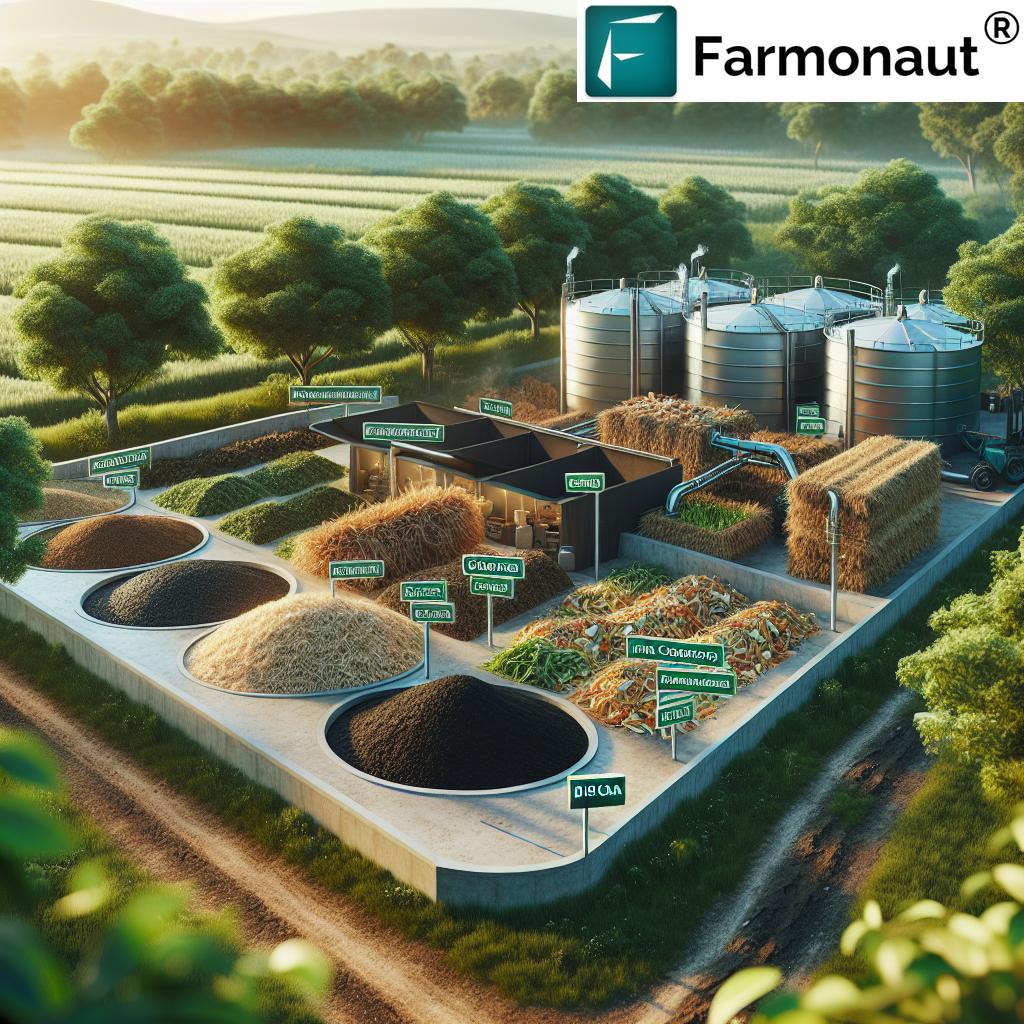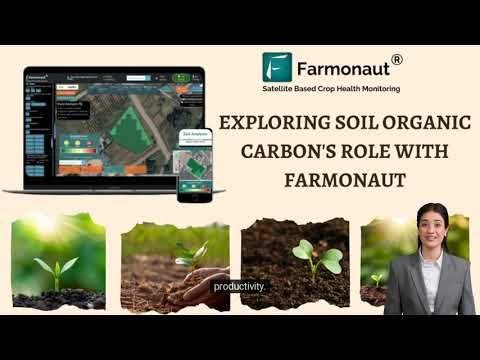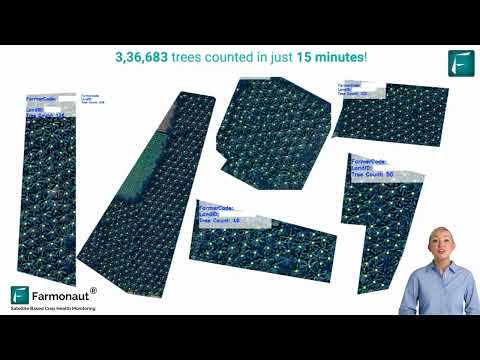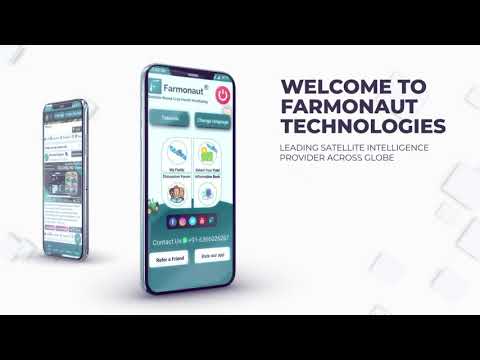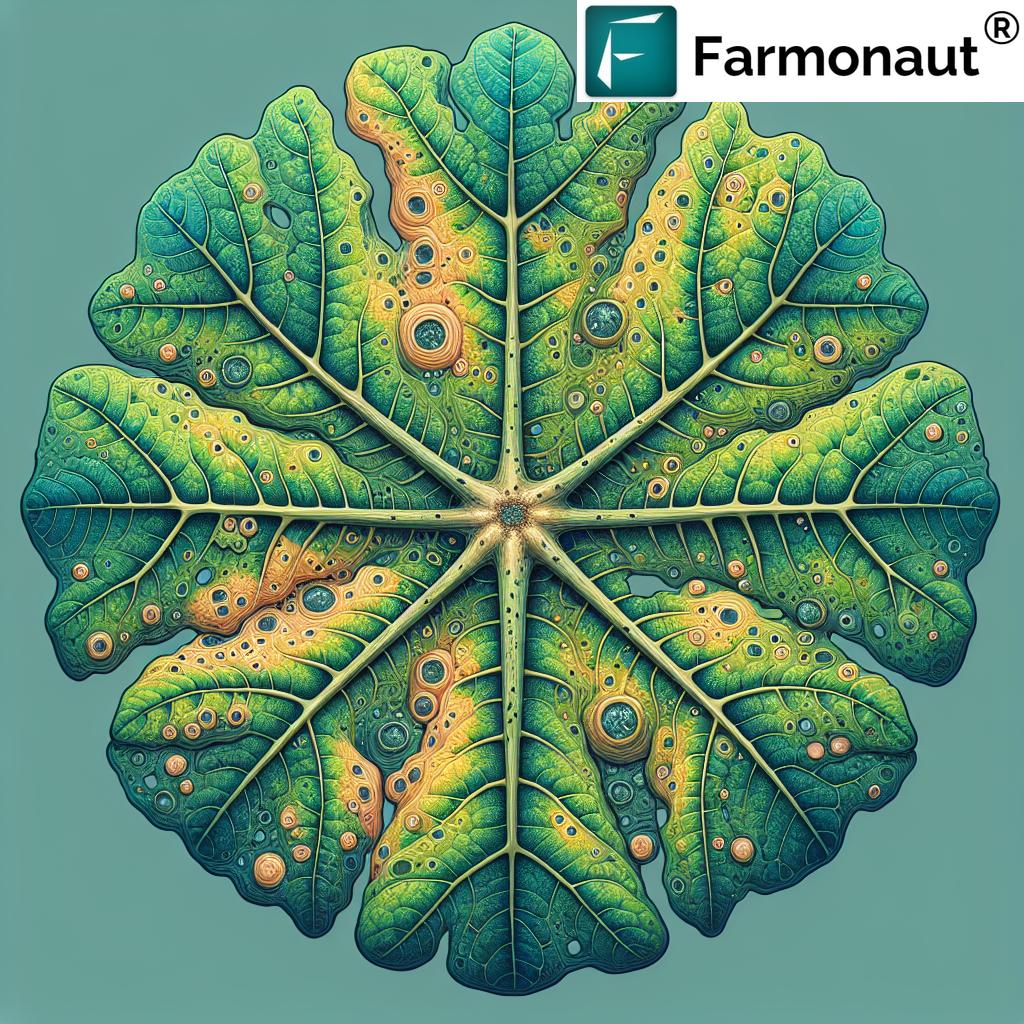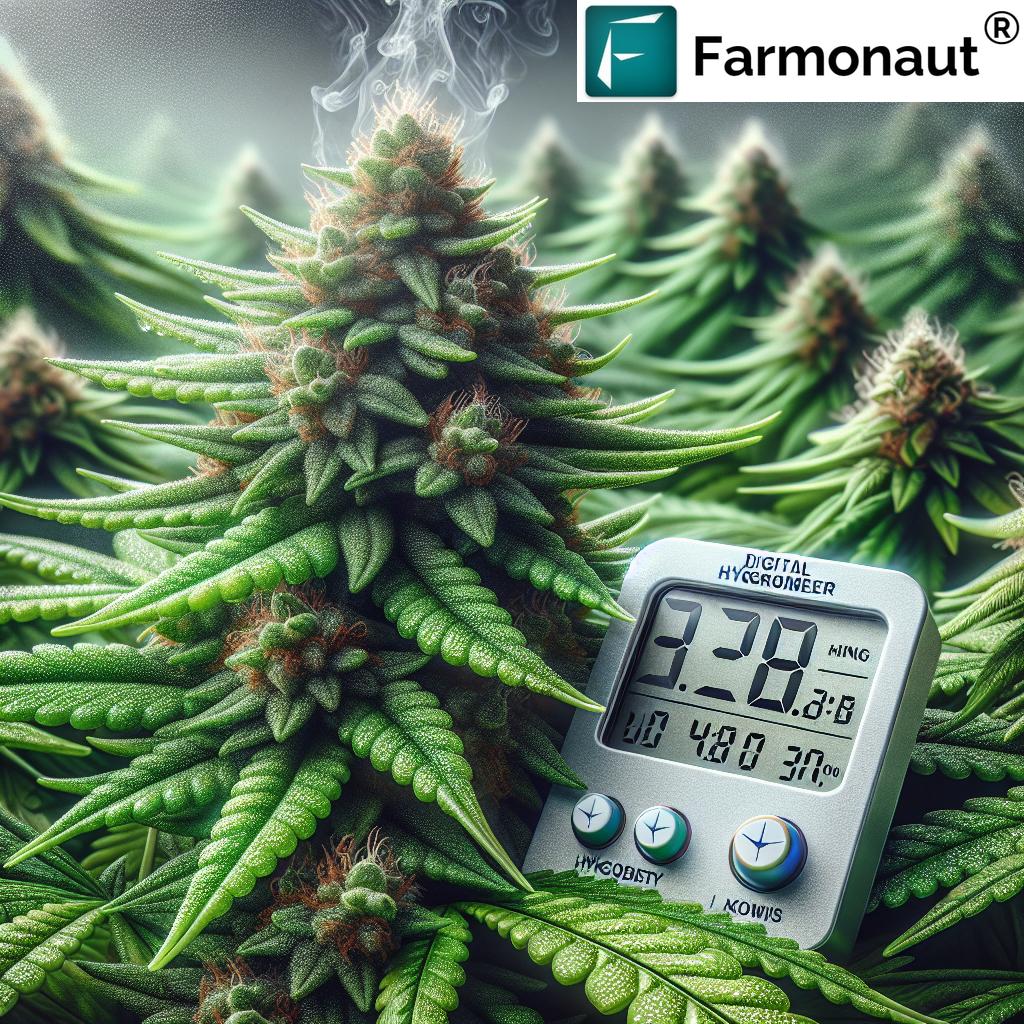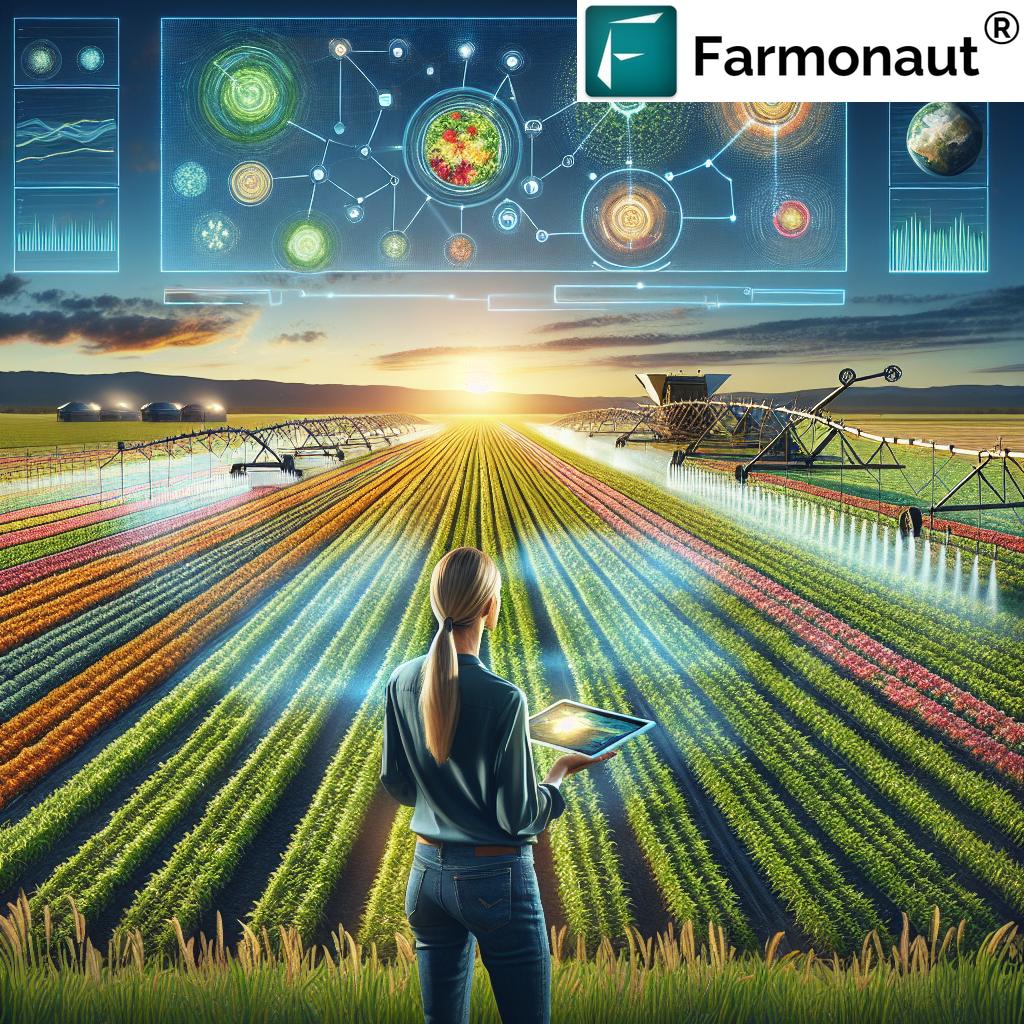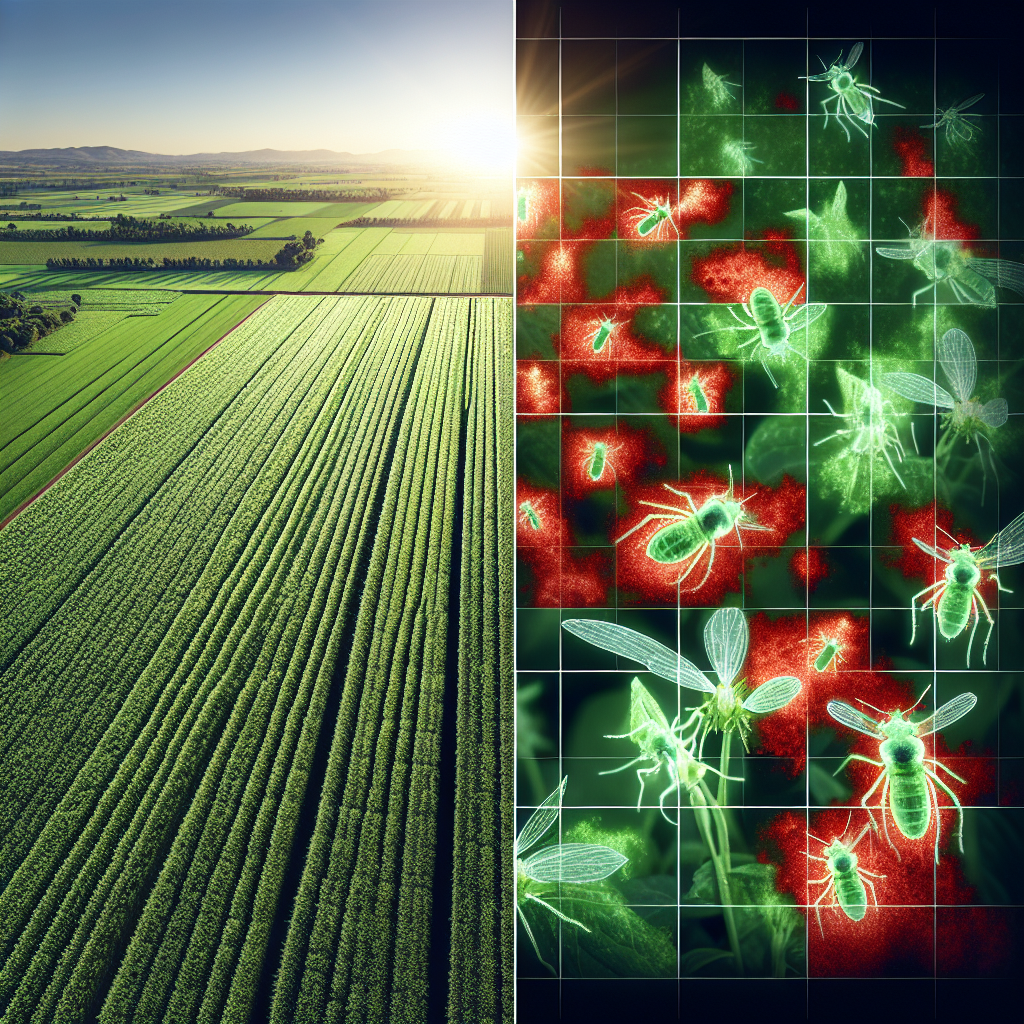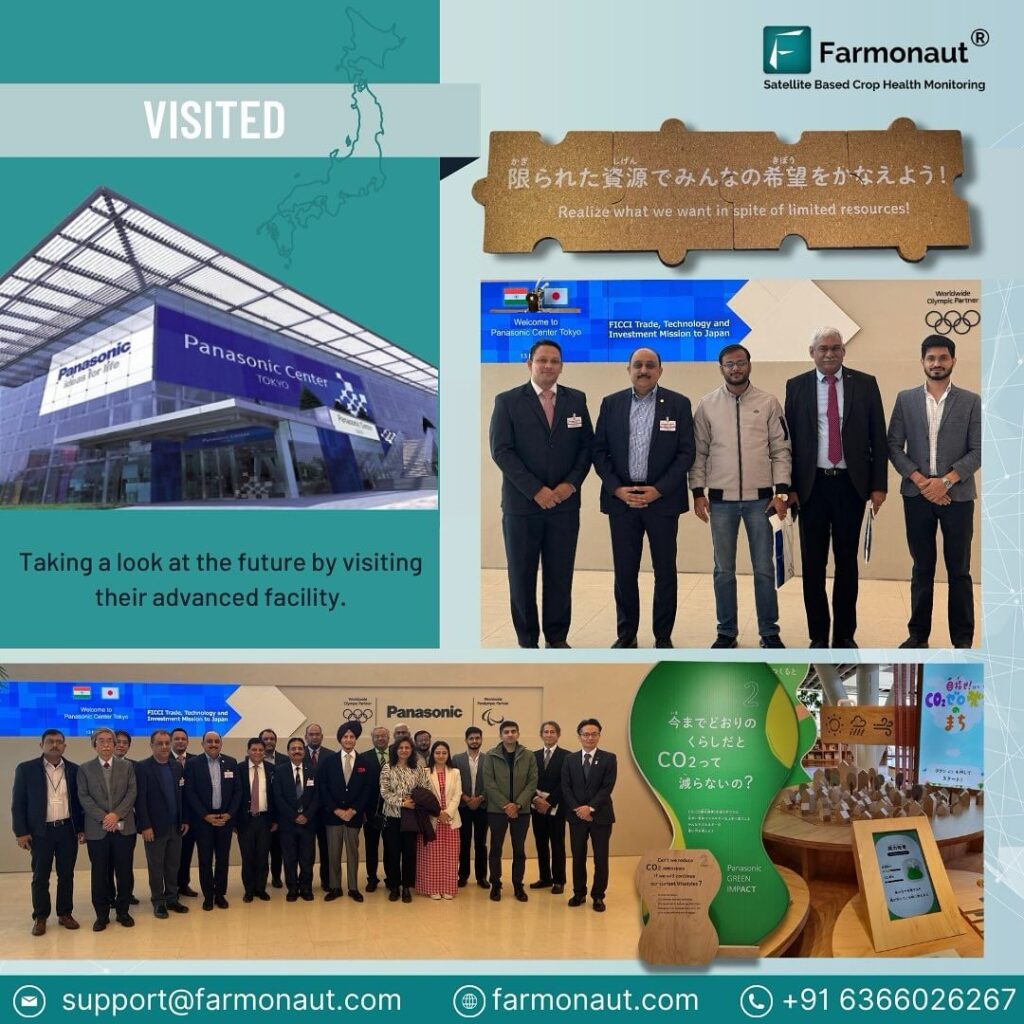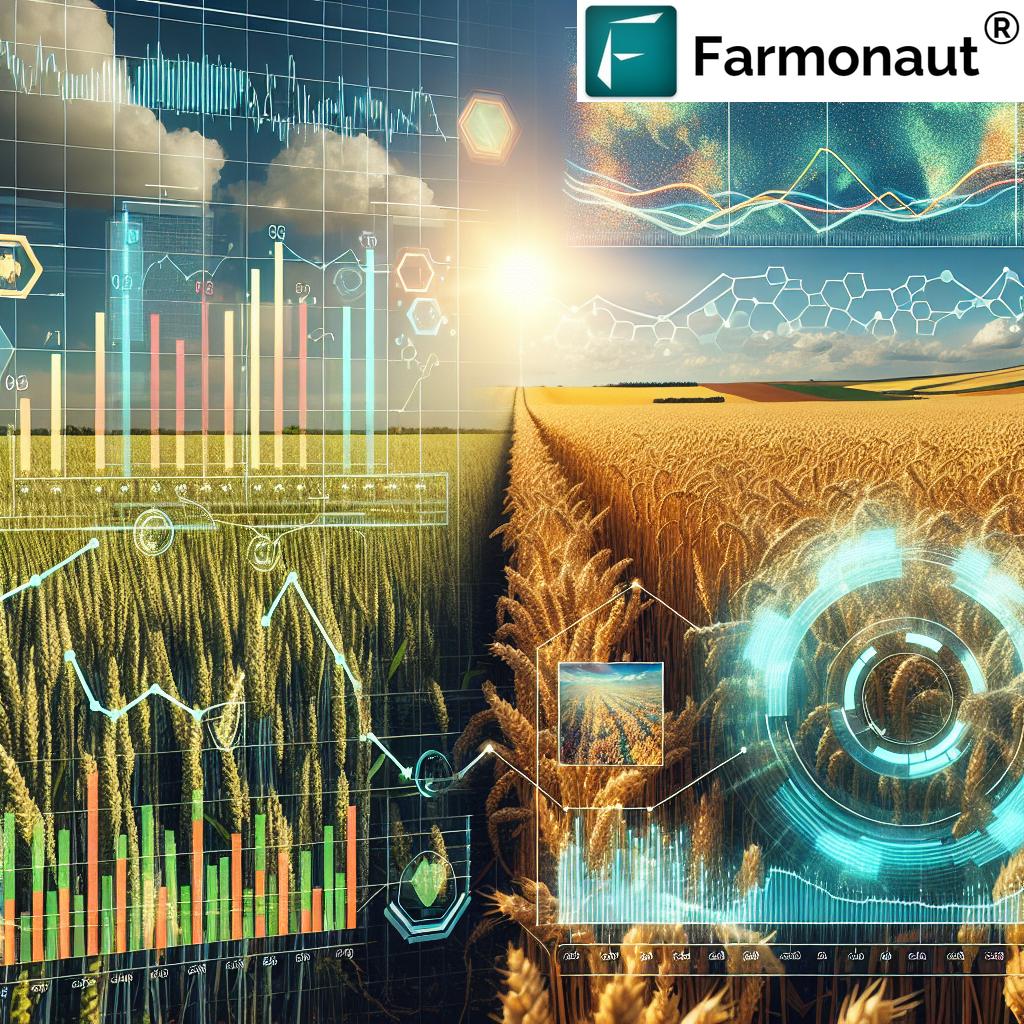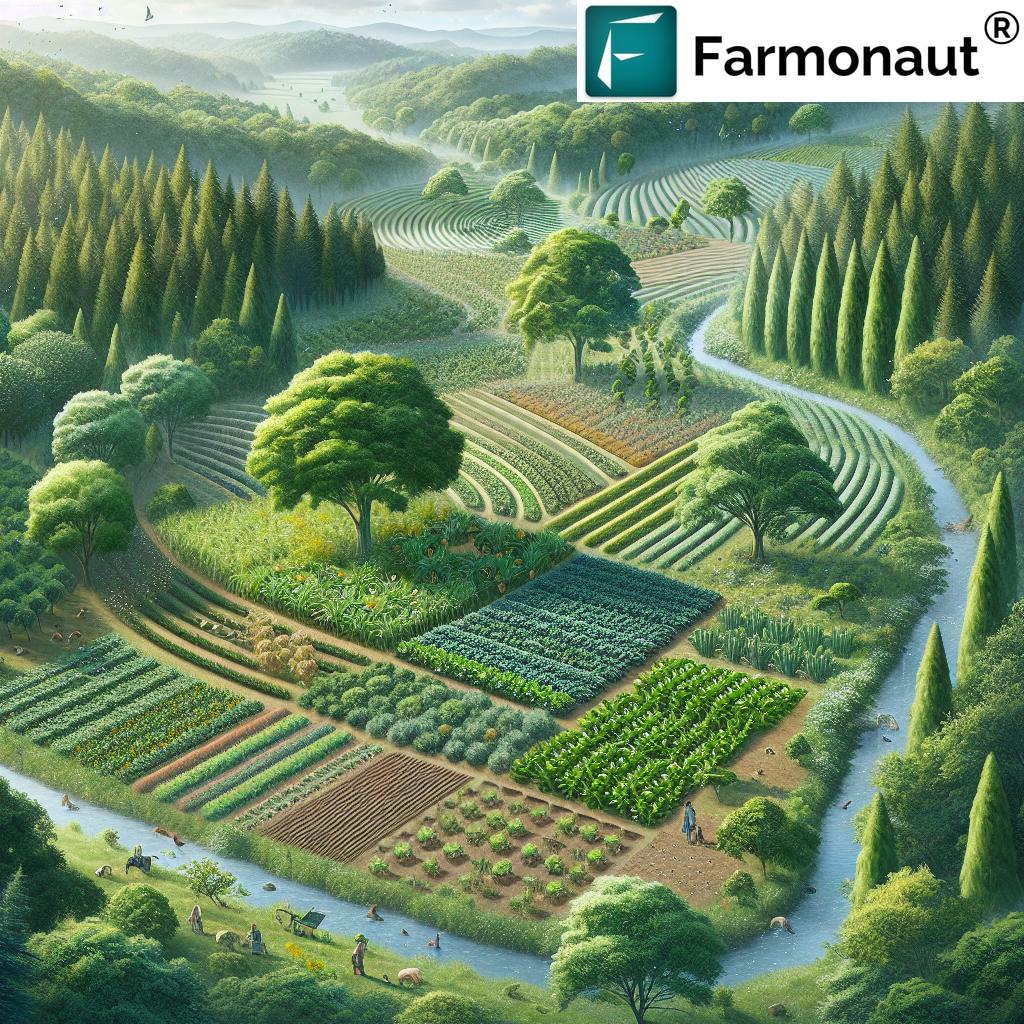Agricultural Waste Management: 7 Shocking Farm Secrets
Table of Contents
- Introduction
- Types of Agricultural Waste
- Challenges in Agricultural Waste Management
- 7 Shocking Farm Secrets: Innovative Agricultural Waste Management Strategies
- Technological Innovations Accelerating Waste Management
- Comparative Table of Agricultural Waste Management Methods
- Role of Policy, Community, and Education
- How Farmonaut Empowers Sustainable Agricultural Waste Management
- Frequently Asked Questions
- Conclusion
Agricultural Waste Management: Why It Matters for Tomorrow’s Farms
As stewards of the land, we recognize that agricultural waste management is not merely a side note in our journey toward sustainable farming practices—it’s a critical component shaping the health of our soils, ecosystems, and rural economies. Farms worldwide generate millions of tons of organic and inorganic materials each year: crop residues, animal manure, processing by-products, and packaging materials. When handled effectively, this “waste” transforms into valuable resources that boost soil health, generate renewable energy, and increase farm profitability. However, mismanagement leads to landfill overflows, pollution, lost economic opportunities, and accelerated climate change.
In this comprehensive guide, we’ll peel back the curtain on the realities of agricultural waste management—highlighting shocking secrets, innovative strategies, technological advancements, and actionable insights for us all. Whether you’re a farmer, agronomist, policymaker, agribusiness owner, or simply passionate about a greener future, understanding these principles empowers us to nurture both our land and our livelihoods.
The Many Faces of Agricultural Waste: Understanding Types & Sources
Agricultural waste, as a term, encompasses a diverse array of materials generated through farming, forestry, and food processing activities. Recognizing the full range of waste types is the first step toward developing innovative agricultural waste utilization strategies. The materials range from bulky, organic residues to hazardous containers, each carrying unique management requirements and resource potentials.
Key Types of Agricultural Waste
- Crop Residues: After each harvest, parts of the plant—such as straw, husks, stalks, leaves—remain on the land. These leftover plant materials are abundant and nutrient-rich but often underutilized.
- Animal Manure: Manure, consisting of livestock excrement and bedding, is both a nutrient dynamo and a potential polluter if not properly managed.
- Processing By-products: From fruit peels, nut shells, and pulp to cottonseed hulls, these materials result from food and fiber processing streams and can be repurposed as feed, compost, or energy sources.
- Forestry Residues: Logging and timber operations produce branches, leaves, bark, and sawdust—often discarded or burned, though they can be processed for energy or mulch.
- Inorganic Packaging & Containers: Plastic bins, chemical drums, fertilizer bags, and pesticide containers—these require careful handling, as they contribute to non-organic, often hazardous, waste streams.
Our farms produced each of these types of waste at different stages—pre-harvest, post-harvest, during animal rearing, and through on-farm processing. By quantifying and categorizing what we generate, we can tailor our organic waste processing and management plan for maximum environmental and economic benefit.
Common Challenges in Agricultural Waste Management
Managing agricultural waste is more complex than it appears. It involves numerous intersecting environmental concerns, economic hurdles, infrastructural gaps, and knowledge barriers. Let’s uncover the most pressing challenges we face on the ground:
- Environmental Impacts of Improper Disposal: Practices like burning crop residues, indiscriminate dumping, or draining manure into waterways release greenhouse gases and pollutants. This causes air pollution, depletes local biodiversity, degrades soil structure, and accelerates climate change.
- Economic Constraints: The high cost of collection, transportation, labor, and investment in advanced waste processing facilities can deter farmers, especially in rural areas, from adopting sustainable solutions.
- Lack of Infrastructure: Many farming communities lack effective waste management infrastructure—such as centralized composting centers, biogas units, or waste sorting stations—which hinders recycling and processing efforts.
- Limited Awareness: There’s substantial room for education and training. Many farmers are unaware of the benefits, economic opportunities, and potential value streams arising from effective agricultural waste management.
- Policy and Regulatory Gaps: Insufficient government incentives, weak enforcement of disposal guidelines, and lack of market linkages for waste-derived products can further exacerbate management hurdles.
As we move forward, overcoming these challenges requires us to combine technology, education, community engagement, and supportive policies for lasting change.
7 Shocking Farm Secrets: Innovative Agricultural Waste Management Strategies
Behind the scenes, many farms are already leveraging groundbreaking techniques and technologies to transform what was once an “unwanted by-product” into valuable assets. Let’s dive into seven secrets reshaping agricultural waste management and driving the transition toward a circular economy in agriculture.
Secret #1: On-Farm Composting for Soil Vitality
Composting farm residues—including straw, leaves, and manure—has become a cornerstone of sustainable farming practices. By controlling the aerobic decomposition of organic waste, we create nutrient-dense humus that:
- Improves soil structure, fertility, and water retention
- Reduces dependence on chemical fertilizers (lowering input costs and pollution)
- Suppresses plant diseases and pests
- Encourages beneficial microbial activity for healthier crops
Studies reveal that on-farm composting is often more cost-effective than purchasing commercial fertilizers and can increase crop yields by up to 15%. The secret? Carefully layering moist crop residues, manure, and green plant matter, maintaining moisture, and turning the pile regularly for even decomposition.
Secret #2: Biogas Production from Agricultural Waste
Anaerobic digestion of organic farm waste—especially animal manure and crop residues—within sealed tanks produces biogas (primarily methane and carbon dioxide). The resulting biogas serves as a powerful renewable energy from agricultural waste source, powering:
- Cooking and heating
- On-farm motors and lighting
- Small-scale electricity generation
The leftover digestate is a potent, pathogen-reduced fertilizer—closing the resource loop. Biogas systems are increasingly subsidized by governments, with some support covering up to 50% of the machinery costs (notable in India and other countries). This not only reduces greenhouse gas emissions and methane release but also delivers direct energy and input savings to farmers.
Want to track how your waste management efforts reduce your farm’s carbon footprint and emissions? Explore Farmonaut Carbon Footprinting—a one-stop satellite monitoring and carbon tracking system for sustainable agriculture!
Secret #3: Biochar for Soil Health and Carbon Sequestration
Through biochar production, we utilize high-temperature, low-oxygen pyrolysis to convert crop residues and forestry by-products into stable carbon-rich charcoal. Applied to soil, biochar:
- Enhances soil fertility by improving nutrient and water retention
- Reduces the need for irrigation and fertilizers
- Permanently sequesters carbon, offsetting farm emissions
- Improves crop yields and stress resilience
For us, the secret is in choosing the right feedstock (rice husks, corn cobs, sawdust) and integrating biochar for soil health into existing crop rotation practices for long-term productivity and sustainability.
Secret #4: Mulching—Maximizing the Value of Crop Residues
Instead of burning or removing crop leftovers, strategic on-field mulching keeps plant materials and leaves as a surface layer. This practice:
- Conserves soil moisture for resilient growth
- Controls weeds and reduces erosion
- Encourages the slow release of nutrients with minimal tillage
- Suppresses disease cycles by maintaining a healthier microbe-rich environment
Mulching is one of the simplest—but most effective—tools for enhancing soil health and recycling resources directly within the field.
Secret #5: Transforming Waste into Animal Feed
Certain processing by-products (e.g., fruit pulp, oilseed cakes, brewery spent grains) can be safely repurposed, after proper processing, as livestock or poultry feed additives. This “farm waste to animal feed” approach:
- Reduces waste disposal challenges and landfill demand
- Creates additional income streams and reduces commercial feed costs
- Closes the circular economy loop by keeping nutrients within the farm system
Local regulations and animal safety standards remain crucial—so it’s key to work with trusted processing partners or implement best-practice guidelines for each waste type.
Need to track your farm’s resource use and optimize animal feed logistics? Discover Farmonaut Fleet and Resource Management tools for streamlined operations and sustainable feed integration.
Secret #6: Renewable Biomass Energy and Biofuels
Biomass energy technologies leverage agricultural residues—such as stalks, husks, dung—turning them into solid, liquid, or gaseous fuels.
- Solid fuels (pellets, briquettes) can replace wood, coal, or charcoal in rural homes and industries.
- Bioethanol and biodiesel, derived from crop waste, offer renewable alternatives to fossil fuels for vehicles and generators.
- Integrated systems enable both heat and power production, boosting total farm energy independence.
These strategies not only generate local jobs but also add significant value to otherwise discarded resources—making renewable energy from agricultural waste more accessible and profitable.
Secret #7: Direct Application and Land Amendment
In some systems, non-toxic plant residues and treated manure are directly applied to soil as organic amendments. This approach:
- Restores organic matter to the soil rapidly
- Cuts transport and processing costs
- Reduces erosion and boosts water holding
The secret for success: apply in the right amounts and at suitable crop stages, ensuring nutrient balance and avoiding runoff or nutrient overload.
Curious how to monitor crop conditions and track improvement in soil health after applying organic amendments? Get real-time satellite-based insights with Farmonaut Large-Scale Farm Management—our precision platform for sustainable farming and data-driven decision-making!
Agricultural Waste Management and Precision Technology: The Future is Here
Technological advancements are propelling agricultural waste management into a new era. By adopting satellite data, AI, IoT devices, and digital platforms, we can monitor, process, and utilize waste far more efficiently and profitably.
- Satellite-Based Crop and Soil Monitoring: Platforms like Farmonaut offer multi-spectral imaging for real-time tracking of crop vitality, soil moisture, and resource utilization on any plot of land—optimizing waste recycling and minimizing resource waste.
- AI-Enabled Farm Advisory: AI-driven systems provide tailored, dynamic advice on organic waste processing, compost application, and integrated nutrient management—putting science in every farmer’s pocket.
- Blockchain Product Traceability: Secure, tamper-proof tracking of farm waste, recycled products, and compost via blockchain inspires trust, transparency, and better market positioning for both waste generators and buyers. Check out Farmonaut Product Traceability for full supply-chain insight and consumer confidence.
- IOT and Smart Facilities: Wireless sensors in bins and compost piles automate temperature, humidity, and gas monitoring—improving waste breakdown, energy recovery, and pollution control on the farm.
- Circular Economy Marketplaces: Digital platforms connect waste producers with processors, buyers, and service providers, unlocking new agricultural waste utilization and circular economy opportunities even for smaller farms and cooperatives.
Comparative Table of Agricultural Waste Management Strategies
To make the best decision for our land and business, it helps to compare the most common, sustainable agricultural waste management strategies side-by-side. Here’s a comprehensive table encapsulating method descriptions, efficiency, environmental impact, soil health benefits, energy potential, and profit increase for farmers.
| Management Method | Description | Estimated Reduction of Waste (%) | Soil Health Benefit | Energy Potential (kWh/ton) | Circular Economy Impact | Estimated Profit Increase (%) |
|---|---|---|---|---|---|---|
| Composting | Controlled aerobic organic waste processing of crop residues, manure, and plant matter to produce nutrient-rich compost for field application | 35-50% | High (increases fertility, improves structure & microbial life) | Low (mainly soil improvement) | Local recycling, reduces fertilizer purchase | 15-25% |
| Anaerobic Digestion | Airtight digestion of manure and organic waste to generate biogas (energy) & digestate (fertilizer) | 30-45% | Medium (nutrient returns, pathogen kill) | 500-900 | Energy plus soil input; reduces methane loss | 5-18% |
| Biochar Production | Thermal decomposition (pyrolysis) of farm residues for carbon-rich biochar soil amendment | 15-40% | Very High (carbon sequestration, water & nutrient retention) | Up to 350 (char energy value) | Locks carbon, boosts resilient farming | 12-28% |
| Animal Feed Processing | Conversion of safe food & plant processing by-products (pulp, shells) into livestock feed supplements | 15-30% | Indirect (less fertilizer need, better nutrient cycling) | Low (but energy is maintained in food chain) | Resource circularity, waste to value | 8-20% |
| Direct Application | Incorporating raw crop waste/manure into soil without extensive processing | Up to 30% | Medium to High (boosts organic matter quickly) | Minimal | Local nutrient cycling, cuts logistics | 5-15% |
Policy, Education, and Community: Foundations for Sustainable Agricultural Waste Management
No farm operates in a vacuum. Effective agricultural waste management hinges on robust public policy, infrastructure investment, and collective effort:
- Government Incentives and Subsidies: Direct financial support for biogas plants, composting facilities, and waste processing technologies accelerates adoption for rural and urban farmers alike. For example, Indian farmers may receive up to 50% of biogas equipment cost from government programs.
- Education and Training: Professional development workshops, extension services, and online knowledge portals help farmers adopt sustainable practices, maximize resource efficiency, and unlock new value streams.
- Infrastructure Development: Strategic investments in rural waste collection, transportation, and recycling facilities strengthen the entire agricultural supply chain.
- Community Engagement: Collective initiatives—like cooperatives, waste valorization clubs, and digital circular economy platforms—make resource recovery accessible to all, regardless of farm size.
When our policies, education systems, and communities work hand in hand, we create enduring, profitable systems for generations to come.
How Farmonaut Empowers Effective Agricultural Waste Management
Tackling agricultural waste management efficiently—and at scale—demands precise information, advanced analytics, and accessible tools tailored to farmers’ needs. That’s why we trust in platforms like Farmonaut, which bring next-generation technology directly to our hands.
- Satellite-Based Monitoring: Farmonaut leverages multi-spectral imagery to monitor evolving crop health, detect stress early, and gauge the success of waste management practices—from compost application to biochar amendment.
- AI-Powered Advisory: The Jeevn AI system delivers custom recommendations on crop residue handling, organic waste processing, irrigation, and pest control. Decision-making becomes faster, smarter, and more profitable.
- Blockchain Traceability: Via Farmonaut Product Traceability, ensure every step of your farm’s supply chain is transparent—eliminating fraud, building consumer trust, and tracking resource flow from field to market.
- Fleet & Resource Management: Optimize waste logistics, reduce transport costs, and streamline resource allocation using Farmonaut Fleet Management.
- Carbon Footprinting: Document and reduce the carbon emissions from agricultural activities—turning sustainability commitments into verifiable action. See Farmonaut Carbon Footprinting for more.
- API and Integration: Leverage Farmonaut’s API for integrating real-time crop, soil, and waste analytics into your own apps or research systems. Developer? Get started via our developer docs.
- Financing Solutions: Cut fraud and unlock new credit with remote crop verification. Explore Farmonaut Crop Loan & Insurance Insights for secure, traceable farm financing.
Ready to experience affordable, scalable, and sustainable farm management?
Or contact us to discuss enterprise-scale solutions and subscriptions tailored for your region, crop, and waste profile!
Frequently Asked Questions: Agricultural Waste Management
-
1. What is agricultural waste management and why is it critical?
Agricultural waste management involves collecting, processing, and utilizing farm-generated materials (such as crop residues, animal manure, and by-products) to maximize resource efficiency, reduce pollution, and enhance farm profitability. It is a critical component for sustainable agriculture as it mitigates environmental impacts and creates economic opportunities. -
2. What are the best sustainable practices for managing farm waste?
The best practices include composting, biogas production, biochar application, mulching, and animal feed processing. Together, they turn waste into resources, reduce greenhouse gas emissions, and build soil health. -
3. How can technology assist in agricultural waste management?
Technologies—such as satellite-based monitoring, AI advisory tools, blockchain traceability, and smart waste processing facilities—enable farmers to monitor, reduce, and utilize waste more efficiently, driving higher yields, energy savings, and sustainable resource use. -
4. What role do government policies play in waste management?
Effective government policies provide the essential subsidies, incentives, infrastructure, and training programs that encourage farmers to adopt sustainable waste processing and recycling methods. -
5. How can waste be turned into a valuable economic resource for farmers?
By implementing innovative strategies—such as biogas generation, compost sales, animal feed production, and biofuel processing—farmers can reduce costs, create new income streams, and increase overall farm profitability by up to 20%. -
6. How does precision agriculture improve waste management?
Precision agriculture uses real-time data from satellites and sensors to optimize the timing and quantity of inputs (like fertilizers and amendments), reducing overall waste and improving the efficiency of agricultural land management. -
7. Are there regulatory requirements for disposal of packaging and hazardous waste?
Yes. Proper handling, recycling, and safe disposal of plastic packaging and chemical containers are mandated by most jurisdictions, supporting both human and environmental health. -
8. Where can I access reliable, real-time solutions for my farm?
Download the Farmonaut App (for Android or iOS) or use the Web App for precise, actionable farm data, crop monitoring, resource tracking, and sustainability analytics.
Conclusion: From Waste to Wealth—Our Path to Sustainable Agriculture
The future of farming lies in our ability to transform agricultural waste from a challenge into an opportunity. By adopting sustainable practices, innovative technologies, and leveraging actionable data, we not only reduce our environmental footprint but also improve farm productivity, profitability, and resilience.
Composting, biogas production, biochar application, animal feed processing, and direct land amendments are just some of the many ways to turn farm leftovers into gold. The rise of precision agriculture—powered by platforms like Farmonaut—makes these solutions affordable, scalable, and practical for farmers of all sizes, from the smallest smallholder to the largest agribusiness.
Let’s continue our journey together: embracing circular economy in agriculture, enhancing soil health, supporting community engagement, and building a greener, more sustainable tomorrow for farmers and the planet alike.


